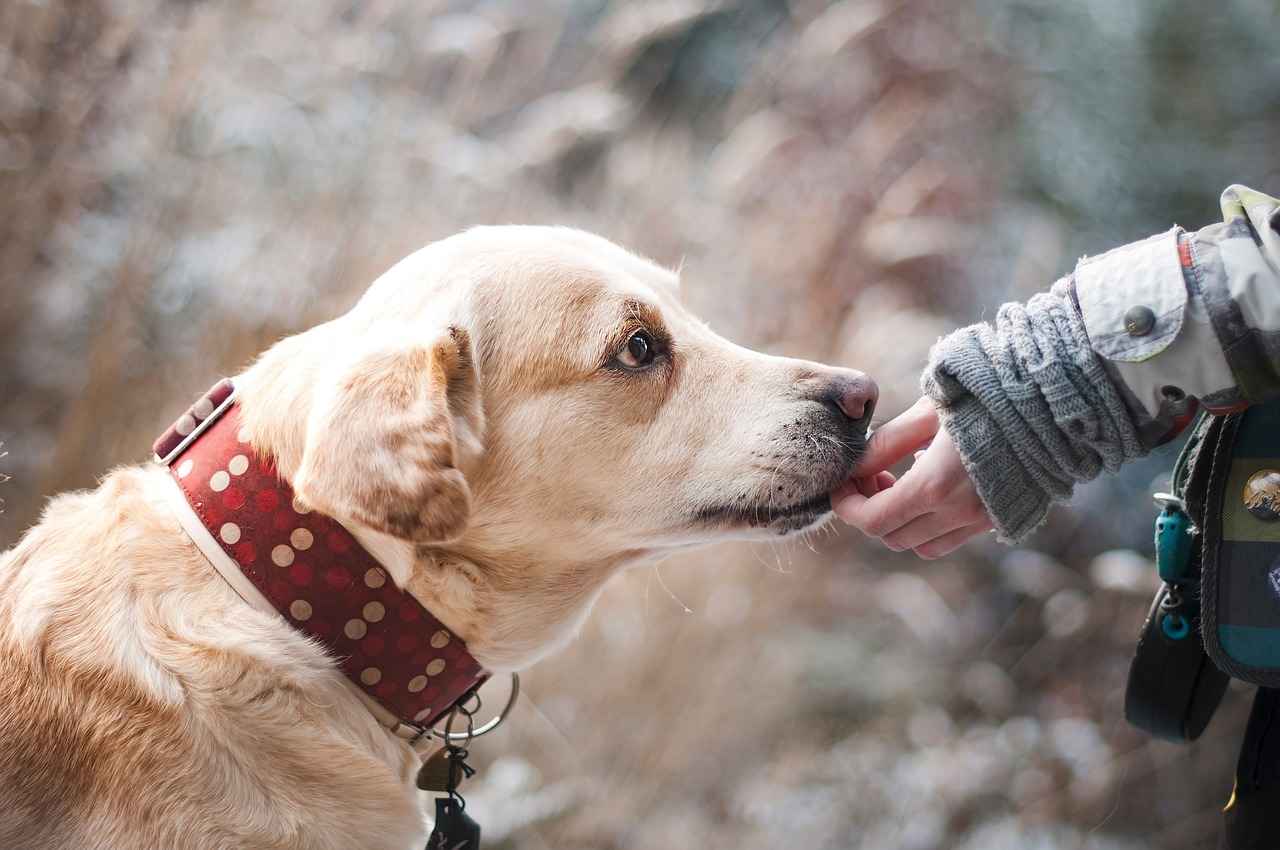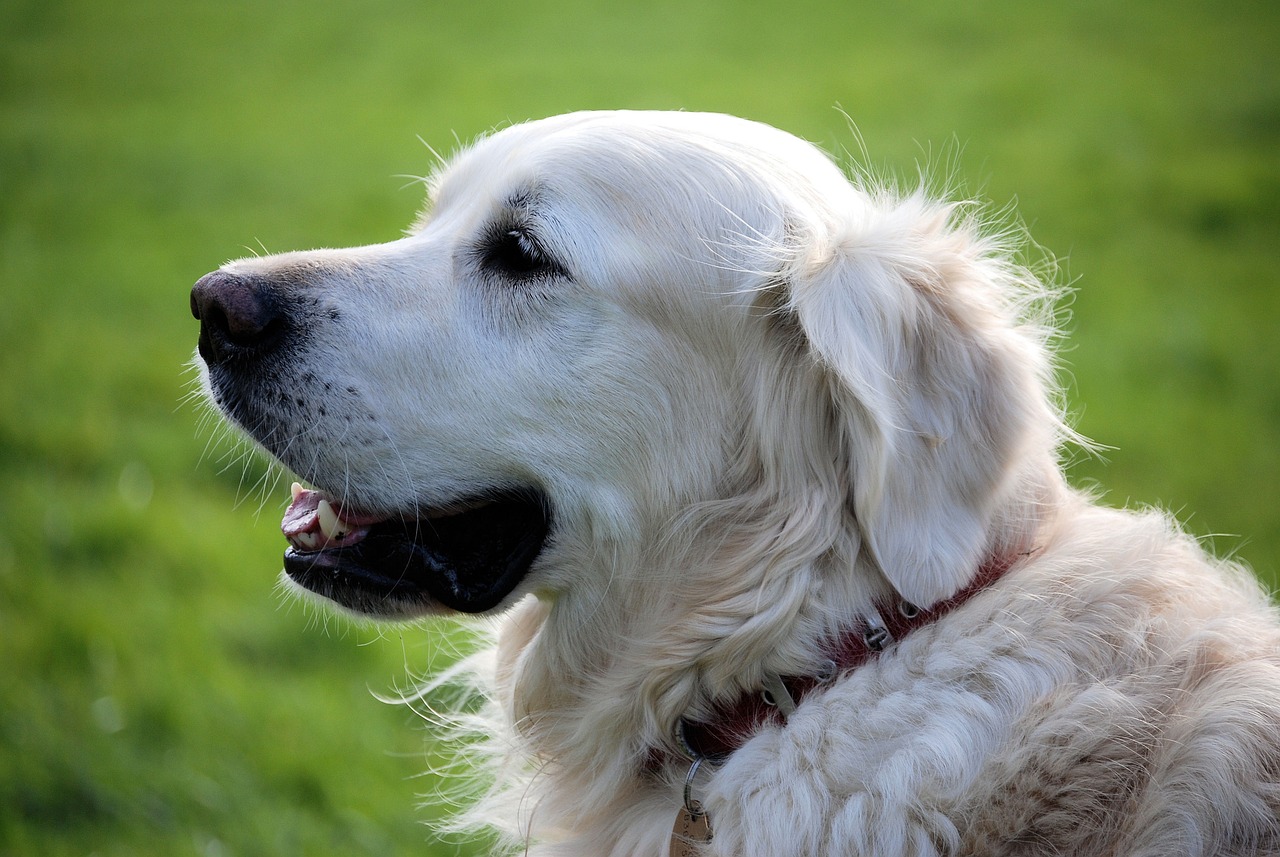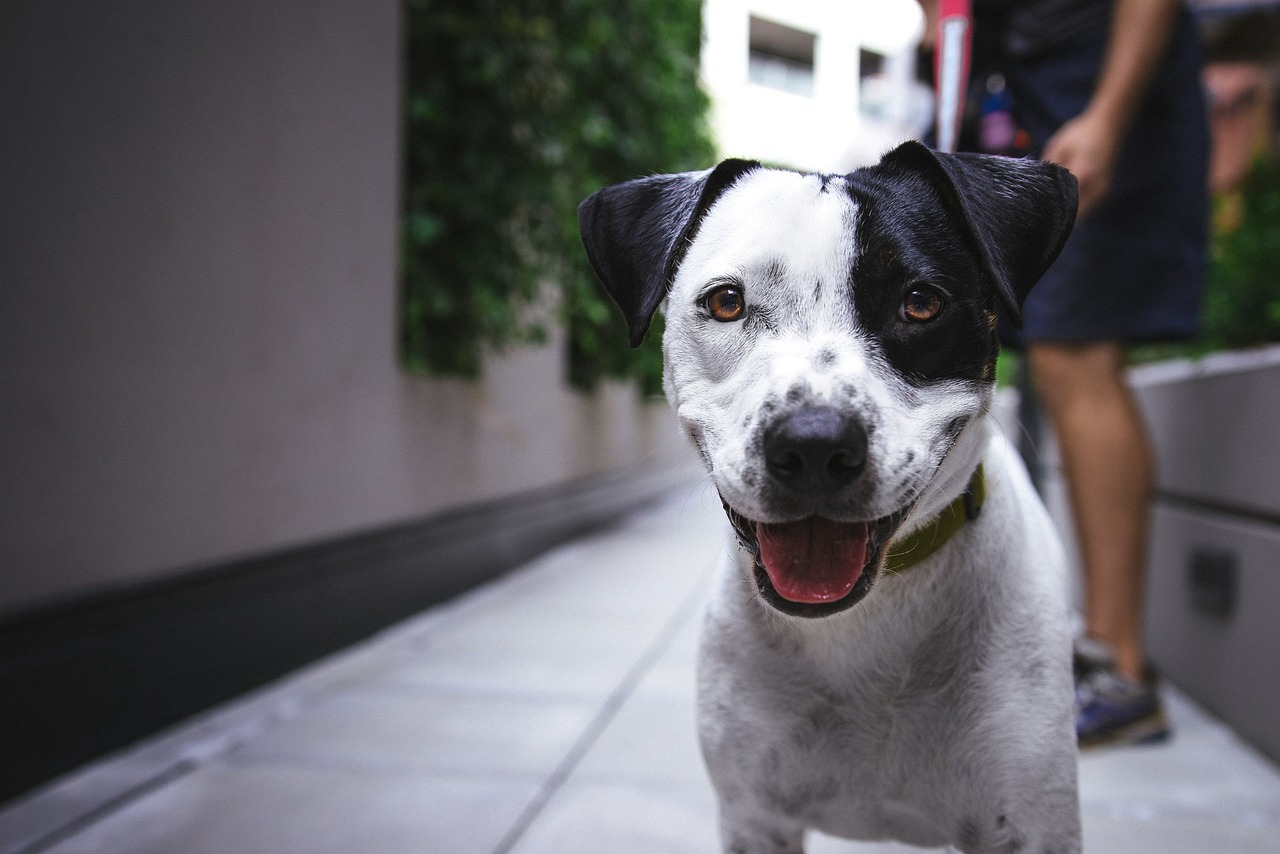This article provides essential tips and insights for pet owners and parents on preventing dog bites, promoting safe interactions, and fostering a harmonious environment between dogs and children.
Understanding Dog Behavior
Recognizing the signs of a dog’s behavior is crucial in preventing bites. Understanding body language and stress signals can help pet owners and parents manage interactions effectively.
Teaching Children How to Interact with Dogs
Educating children on safe dog interactions is vital. Teaching them the right approach can reduce the risk of bites and foster a positive relationship between kids and dogs.
- Basic Rules for Children: Establishing simple rules for children when interacting with dogs can prevent misunderstandings and potential bites. These rules should emphasize respect and caution.
- Approaching a Dog Safely: Children should learn to approach dogs calmly and respectfully, avoiding sudden movements that may startle the animal. This understanding promotes safety during interactions.
- Recognizing Dog’s Comfort Zones: Teaching children to recognize when a dog is uncomfortable or frightened can help prevent aggressive reactions. Awareness of a dog’s personal space is essential for safe interactions.
Understanding Dog Triggers
Identifying what may provoke a dog to bite is crucial for prevention. Various triggers, such as fear, pain, or territorial instincts, must be understood by both pet owners and parents.
Socialization and Training for Dogs
Proper socialization and training of dogs play a significant role in preventing bites. Well-trained dogs are less likely to exhibit aggressive behaviors in various situations.
- Importance of Early Socialization: Socializing puppies from a young age can significantly reduce the likelihood of aggressive behavior. Exposure to different people, environments, and other animals is key.
- Consistent Training Techniques: Implementing consistent training techniques helps reinforce good behavior in dogs. Positive reinforcement methods can encourage dogs to respond appropriately to various situations.
Supervision and Safety Measures
Active supervision of children when they are around dogs is essential. Implementing safety measures can help prevent incidents and ensure a secure environment for both children and pets.
- Creating Safe Spaces for Dogs: Providing dogs with a designated safe space can reduce stress and the likelihood of defensive behavior. This space allows dogs to retreat when they feel overwhelmed.
- Using Leashes and Gates: Utilizing leashes and gates can help control interactions between dogs and children. These tools provide an additional layer of safety, especially in shared spaces.
Recognizing Signs of Aggression
Understanding the warning signs of aggression in dogs is crucial for prevention. Recognizing these signs can help pet owners and parents take necessary precautions before an incident occurs.
- Body Language Indicators: Dogs communicate through body language, and learning to interpret these signals can help prevent bites. Signs of aggression may include growling, baring teeth, or stiff posture.
- Behavioral Changes to Watch For: Monitoring behavioral changes in dogs can indicate stress or discomfort. Being attentive to these changes allows pet owners to address issues before they escalate.
When to Seek Professional Help
Knowing when to seek professional help for behavioral issues is essential. Trainers and behaviorists can provide valuable insights and strategies for managing aggressive tendencies.
- Finding a Qualified Dog Trainer: Researching and finding a qualified dog trainer can significantly aid in addressing behavioral concerns. Look for trainers with positive reviews and experience in aggression management.
- Behavioral Assessment for Dogs: Conducting a behavioral assessment can help identify specific issues that may lead to biting. This assessment is crucial for developing a tailored training plan.
Conclusion: Promoting Safe Interactions
By implementing these dog bite prevention tips, pet owners and parents can foster safe interactions between dogs and children. Awareness, education, and proactive measures are key to ensuring a harmonious environment.

Understanding Dog Behavior
is essential for pet owners and parents to ensure safe interactions between children and dogs. Recognizing the signs of a dog’s behavior can significantly reduce the risk of bites and foster a harmonious relationship. Dogs communicate primarily through body language, and being attuned to their signals can help prevent misunderstandings.
To effectively manage interactions, it is crucial to understand various aspects of dog behavior:
- Body Language: Dogs express their feelings through their posture, tail position, and facial expressions. For example, a wagging tail doesn’t always indicate happiness; it can also signify excitement or agitation. Signs of aggression can include:
- Stiff posture
- Growling
- Baring teeth
- Stress Signals: Dogs often display stress through behaviors such as panting, pacing, or avoiding eye contact. Recognizing these signals is vital for preventing bites, as a stressed dog may react defensively.
- Comfort Zones: Each dog has a personal space that should be respected. Teaching children to recognize when a dog is uncomfortable or frightened can help prevent aggressive reactions. It’s essential for kids to learn to approach dogs gently and calmly, avoiding sudden movements that may startle them.
Understanding these behaviors allows pet owners and parents to create a safer environment. It is also important to consider the dog’s triggers, such as:
- Fear
- Pain
- Territorial instincts
By being aware of these factors, families can manage interactions more effectively, reducing the likelihood of incidents. Remember, fostering a positive relationship between dogs and children involves patience, education, and respect for the dog’s needs.
In conclusion, recognizing the signs of dog behavior is a proactive step towards preventing bites and ensuring safe interactions. By understanding body language and stress signals, pet owners and parents can create a harmonious environment for both children and dogs.

Teaching Children How to Interact with Dogs
is a fundamental aspect of ensuring the safety and well-being of both children and pets. Understanding how to interact with dogs can significantly decrease the risk of dog bites while fostering a positive and trusting relationship between kids and their furry friends. Here, we explore essential guidelines and practices to educate children on safe dog interactions.
- Approach Dogs Calmly: Children should learn to approach dogs in a calm manner. Running or making loud noises can startle a dog, increasing the chances of an adverse reaction.
- Ask for Permission: Teach children to always ask the dog’s owner for permission before petting or interacting with a dog. This respects the dog’s space and the owner’s authority.
- Respect the Dog’s Space: Children must be educated on the importance of giving dogs their personal space. A dog that feels cornered or threatened may react defensively.
- Gentle Touch: Encourage children to use gentle hands when petting dogs. Quick or rough movements can be perceived as aggressive or threatening by the animal.
- Recognizing Signs of Discomfort: Educate children to recognize when a dog is uncomfortable. Signs like growling, tucked tails, or stiff bodies indicate that the dog may not want to be approached.
By instilling these principles in children, we can create a safer environment for interactions with dogs. It is essential for parents to reinforce these teachings through practical demonstrations and discussions. Regularly engaging in conversations about dog behavior and safety can help children internalize these lessons.
In conclusion, is not just about preventing bites; it is about nurturing a respectful and loving relationship between children and dogs. With proper education, children can learn to appreciate and enjoy the companionship of dogs while ensuring their safety and the safety of the animals.
Basic Rules for Children
Establishing simple rules for children when interacting with dogs is essential to ensure safety and prevent misunderstandings that could lead to bites. These guidelines should focus on fostering an environment of respect and caution. Here are some fundamental rules to instill in children:
- Always Ask Permission: Before approaching any dog, children should learn to ask the owner for permission. This teaches them that not all dogs are friendly and that it’s important to respect the owner’s wishes.
- Approach Calmly: Children should be taught to approach dogs slowly and calmly. Sudden movements can startle a dog, potentially leading to aggressive reactions.
- Respect the Dog’s Space: It’s crucial for children to understand that dogs have personal space. They should be encouraged to let the dog come to them instead of rushing in.
- Don’t Disturb a Dog While Eating or Sleeping: Children must learn that dogs can be protective of their food and resting areas. Disturbing them in these moments can provoke a defensive response.
- Use Gentle Touch: Teach children to pet dogs gently and to avoid pulling on ears, tails, or fur. This promotes a positive interaction and prevents the dog from feeling threatened.
- Watch for Signs of Discomfort: Children should be educated on recognizing when a dog is uncomfortable or scared. Signs like growling, stiff posture, or a tucked tail indicate that the dog needs space.
By following these basic rules, children can learn to interact safely with dogs, fostering a positive relationship while minimizing the risk of bites. Education and awareness are key components in ensuring both children and dogs can coexist peacefully.
Approaching a Dog Safely
When it comes to interacting with dogs, teaching children the right approach is essential for ensuring safety and fostering positive relationships. Children should learn to approach dogs in a calm and respectful manner, as this helps to create a comfortable environment for both the child and the dog. Sudden movements can easily startle dogs, leading to potential fear or aggression. Therefore, it is crucial for children to understand the importance of gentle interactions.
Here are some key tips for children to remember when approaching a dog:
- Always Ask for Permission: Before approaching any dog, children should always ask the owner for permission. This ensures that the owner is aware and can provide guidance on the dog’s behavior.
- Approach Slowly: Children should take their time when approaching a dog. A slow and steady approach allows the dog to assess the situation and feel more at ease.
- Let the Dog Come to You: Instead of reaching out immediately, children should allow the dog to come to them. This respects the dog’s space and gives it the opportunity to engage at its own comfort level.
- Avoid Direct Eye Contact: Direct eye contact can be perceived as a threat by dogs. Teach children to look at the dog from the side rather than staring directly into its eyes.
- Use a Calm Voice: Encouraging children to speak softly and calmly can help reassure the dog. High-pitched or loud voices may excite or scare the animal.
By instilling these principles in children, we can help them develop a healthy respect for dogs and reduce the risk of incidents. Understanding a dog’s body language and recognizing when a dog is uncomfortable are also vital skills for children to learn. Such knowledge empowers them to interact safely and enjoyably with their furry friends.
In conclusion, teaching children how to approach dogs safely is not just about preventing bites; it is about nurturing a bond of trust and respect between children and dogs. By fostering a safe environment, we can ensure that both children and pets coexist happily.
Recognizing Dog’s Comfort Zones
Recognizing a Dog’s Comfort Zones is a critical aspect of ensuring safe interactions between children and dogs. Understanding a dog’s personal space and emotional state can significantly reduce the risk of aggressive reactions and foster a positive environment for everyone involved.
Dogs, like humans, have their own comfort zones. These zones are the areas around them where they feel safe and secure. When children learn to respect these boundaries, they contribute to a more harmonious relationship with their canine companions. Here are some key points to consider:
- Understanding Body Language: Dogs communicate primarily through body language. Signs such as a lowered head, tucked tail, or flattened ears can indicate discomfort or fear. Teaching children to recognize these signals is essential.
- Safe Distances: Each dog has a different threshold for comfort. Educating children about maintaining a safe distance, especially when meeting a new dog, can help prevent misunderstandings.
- Recognizing Stress Signals: Dogs may exhibit stress in various ways, such as yawning, licking their lips, or turning their heads away. Children should be taught to observe these signs and to back off if a dog appears distressed.
- Creating Positive Experiences: Encourage children to interact with dogs in a calm manner. Positive reinforcement, such as treats or praise, can help dogs associate children with good experiences, reinforcing trust and comfort.
- Encouraging Safe Spaces: Dogs should have a designated area where they can retreat when they feel overwhelmed. Teaching children to respect these spaces is vital for the dog’s well-being.
In conclusion, teaching children to recognize a dog’s comfort zones is crucial for preventing aggressive reactions. By fostering an environment of understanding and respect, both children and dogs can enjoy safe and positive interactions.
Understanding Dog Triggers
Identifying what may provoke a dog to bite is crucial for prevention. Understanding the various triggers that can lead to aggressive behavior is essential for both pet owners and parents. By recognizing these triggers, we can significantly reduce the risk of dog bites and foster a safer environment for children and pets alike.
- Fear: A frightened dog may react defensively. Signs of fear include cowering, tucked tails, and growling. It is important to approach a fearful dog with caution and avoid sudden movements that could escalate the situation.
- Pain: Dogs in pain may bite as a reflex. If a dog is injured or unwell, they may exhibit aggressive behavior. Always be cautious when handling a dog that seems to be in discomfort.
- Territorial Instincts: Dogs are naturally protective of their territory. Approaching a dog while they are guarding their space, such as their bed or food, can provoke an aggressive response. Educating children about respecting a dog’s space is essential.
- Overstimulation: High-energy situations can lead to overstimulation, resulting in a dog reacting unpredictably. Understanding a dog’s limits during playtime is vital for preventing bites.
- Protective Behavior: Dogs may exhibit aggression when they perceive a threat to their owner or family. Recognizing when a dog feels the need to protect can help in managing their behavior.
By being aware of these triggers, pet owners and parents can take proactive steps to prevent incidents. This includes educating children on how to interact with dogs safely and recognizing the signs that a dog may be uncomfortable or agitated. Effective communication and supervision are key components in ensuring a safe environment for both children and dogs.
Ultimately, fostering a positive relationship between dogs and children involves understanding and respecting the animal’s feelings. Through education and awareness, we can create a harmonious atmosphere that promotes safety and companionship.

Socialization and Training for Dogs
are essential components in ensuring a safe and enjoyable experience for both pets and their families. Proper socialization and training play a critical role in reducing the likelihood of aggressive behaviors, thereby preventing dog bites. A well-socialized and trained dog is more likely to respond positively in various situations, making them a safer companion for children and adults alike.
One of the most important aspects of dog training is early socialization. Puppies should be exposed to a variety of environments, people, and other animals during their formative months. This exposure helps them develop confidence and adaptability, which can significantly reduce fear-based reactions that may lead to biting. For instance, a puppy that has been gently introduced to different stimuli is less likely to react aggressively when faced with new experiences later in life.
In addition to socialization, consistent training techniques are vital. Utilizing positive reinforcement methods encourages dogs to learn appropriate behaviors while building a trusting relationship with their owners. Simple commands such as “sit,” “stay,” and “come” not only enhance communication but also establish boundaries. When dogs understand what is expected of them, they are less likely to feel anxious or threatened, which can lead to aggressive behavior.
| Benefits of Socialization | Benefits of Training |
|---|---|
| Reduces fear and anxiety | Establishes clear communication |
| Encourages positive interactions | Reinforces good behavior |
| Promotes adaptability | Builds a trusting bond |
Moreover, recognizing a dog’s comfort zones is crucial. Dogs have personal spaces, and understanding these boundaries can prevent misunderstandings that might lead to aggressive reactions. Teaching children to respect these zones is equally important; they should learn to observe a dog’s body language and recognize when a dog is feeling stressed or uncomfortable.
In conclusion, the combination of socialization and training not only enhances a dog’s behavior but also creates a safer environment for everyone involved. By committing to these practices, pet owners can foster a harmonious relationship between dogs and their families, significantly reducing the risk of dog bites.
Importance of Early Socialization
Socializing puppies at a young age is a critical factor in ensuring they grow into well-adjusted adult dogs. The early stages of a puppy’s life are vital for shaping their behavior and temperament. By exposing them to a variety of people, environments, and other animals, we can significantly reduce the likelihood of aggressive behavior in the future.
During the first few months of life, a puppy’s brain is highly receptive to new experiences. This is often referred to as the sensitive period for socialization. Engaging with different stimuli during this time helps puppies learn how to interact positively with the world around them. Here are some key benefits of early socialization:
- Reduces Fear and Anxiety: Puppies that are not exposed to diverse situations may become fearful or anxious as adults. By introducing them to various settings, they learn to cope with new experiences.
- Promotes Positive Interactions: Socialized puppies are more likely to develop friendly behaviors towards strangers and other animals, which fosters a more harmonious environment.
- Enhances Learning: Early socialization can improve a dog’s ability to learn commands and respond to training, making the training process smoother and more effective.
To effectively socialize your puppy, consider the following strategies:
- Visit Different Environments: Take your puppy to parks, pet stores, and busy streets to expose them to various sights and sounds.
- Introduce New People: Encourage friends and family to interact with your puppy, allowing them to experience different types of human behavior.
- Arrange Playdates: Set up playdates with other vaccinated dogs to help your puppy learn appropriate social cues.
In conclusion, early socialization is essential for developing a well-behaved dog. By investing time and effort into exposing your puppy to a wide range of experiences, you are laying the foundation for a confident and friendly companion. Remember, the goal is to create positive associations with the world, which will ultimately lead to a more enjoyable relationship between you and your dog.
Consistent Training Techniques
are essential in establishing a well-behaved dog. Implementing these techniques not only reinforces good behavior but also fosters a deeper bond between the dog and its owner. By utilizing positive reinforcement methods, pet owners can create an environment where dogs feel encouraged to respond appropriately to various situations.
Training should be a consistent and ongoing process. Dogs thrive on routine, and having a structured approach helps them understand what is expected of them. Here are some effective strategies for consistent training:
- Positive Reinforcement: Rewarding your dog with treats, praise, or playtime when they exhibit desired behaviors encourages them to repeat those actions.
- Clear Commands: Use simple and clear commands to avoid confusion. Consistency in the words you choose helps your dog learn faster.
- Regular Training Sessions: Short, frequent training sessions are more effective than long, infrequent ones. Aim for 5-10 minute sessions multiple times a day.
- Socialization: Exposing your dog to various environments, people, and other animals helps them become well-adjusted and reduces anxiety, which can lead to behavioral issues.
- Patience and Understanding: Every dog learns at its own pace. Be patient and understanding, and avoid punishment, which can lead to fear and anxiety.
Incorporating these techniques into your dog’s training routine can significantly improve their behavior and responsiveness. Moreover, a well-trained dog is less likely to exhibit aggressive behaviors, making interactions with children and other pets safer.
In conclusion, consistent training techniques are vital for reinforcing good behavior in dogs. By focusing on positive reinforcement and maintaining a structured training approach, pet owners can cultivate a loyal and well-mannered companion.

Supervision and Safety Measures
Ensuring the safety of children around dogs is a responsibility that cannot be overlooked. Active supervision is not just recommended; it is essential in preventing potential incidents. When children and dogs interact, their safety largely depends on the vigilance of adults present. This section will outline effective safety measures to create a secure environment for both children and pets.
One of the primary ways to ensure safety is through constant monitoring. Parents and guardians should always keep an eye on children when they are near dogs, especially unfamiliar ones. This proactive approach helps in identifying any signs of discomfort or potential aggression from the dog before a situation escalates.
| Safety Measure | Description |
|---|---|
| Designated Play Areas | Establish specific areas for children and dogs to play, ensuring that both have enough space to feel comfortable. |
| Use of Leashes | Always use a leash when introducing a dog to a child, especially in public spaces. This helps maintain control over the dog’s movements. |
| Teach Children Boundaries | Instruct children on the importance of respecting a dog’s personal space and understanding when a dog wants to be left alone. |
Additionally, creating a safe space for dogs is crucial. This space allows dogs to retreat when they feel overwhelmed, reducing the likelihood of defensive behavior. A designated area filled with their favorite toys and a comfortable bed can help dogs feel secure.
Utilizing physical barriers such as gates can further enhance safety. These barriers help manage interactions between dogs and children, especially in shared environments. By controlling access, you can minimize the risk of unsupervised encounters that may lead to accidents.
In conclusion, active supervision combined with effective safety measures is vital for fostering a secure environment for children and dogs. By implementing these strategies, parents can significantly reduce the risk of incidents and promote positive interactions between their children and pets.
Creating Safe Spaces for Dogs
is an essential aspect of responsible pet ownership. By providing a designated area where dogs can feel secure and relaxed, pet owners can significantly reduce stress levels and the likelihood of defensive behavior. This article will explore the importance of safe spaces for dogs, how to create them, and their benefits in fostering a harmonious environment.
Dogs, like humans, can experience anxiety and stress in various situations. Whether it’s due to loud noises, unfamiliar visitors, or chaotic environments, having a safe retreat allows dogs to escape and recharge. A safe space can be a cozy corner in the living room, a quiet room, or even a crate that they associate with comfort. The key is to ensure that this area is accessible and welcoming.
- Choose the Right Location: Select a quiet area in your home where your dog can retreat without interruptions. Avoid high-traffic zones and ensure the space is away from loud noises.
- Make It Comfortable: Provide soft bedding, toys, and water in the safe space. This will encourage your dog to use the area when they feel overwhelmed.
- Respect Their Space: Teach family members, especially children, to respect the dog’s safe space. This means not forcing interactions when the dog is in their retreat.
- Use Positive Reinforcement: Encourage your dog to use their safe space by rewarding them with treats or praise when they go there voluntarily.
By understanding the importance of these safe spaces, pet owners can help their dogs manage stress more effectively. This proactive approach not only enhances the dog’s well-being but also promotes safer interactions between dogs and children. When dogs feel secure, they are less likely to exhibit defensive behaviors, fostering a peaceful coexistence in the home.
In conclusion, creating and maintaining a safe space for your dog is a simple yet effective strategy to enhance their quality of life. By recognizing their need for a personal retreat, you can ensure a happier, more relaxed pet, which ultimately leads to a safer environment for everyone.
Using Leashes and Gates
Establishing a safe environment for both children and dogs is a priority for any pet owner. One effective way to achieve this is by utilizing leashes and gates. These tools not only help to control interactions but also foster a sense of security in shared spaces.
Leashes are essential for maintaining control over dogs during walks or playtime. They allow pet owners to guide their dogs away from potential hazards or stressful situations. When used correctly, leashes can prevent dogs from running into traffic or approaching unfamiliar individuals who may not be comfortable around pets. Additionally, when children are involved, leashes serve as a vital safety measure, ensuring that dogs do not jump or run unexpectedly.
Similarly, gates can create designated areas where dogs can feel safe and secure. By setting up gates in your home or yard, you can restrict access to certain areas, allowing dogs to retreat when they feel overwhelmed. This separation is particularly beneficial during gatherings or when children are playing, as it provides dogs with a quiet space to relax away from the noise and excitement.
Moreover, using gates in combination with leashes can enhance safety during interactions. For instance, when introducing a new dog to a child, a leash can help manage the dog’s behavior, while a gate can keep the child at a safe distance until both parties are comfortable. This gradual introduction can significantly reduce anxiety for both the dog and the child.
In conclusion, the combination of leashes and gates is a practical approach to managing interactions between dogs and children. These tools not only promote safety but also contribute to a harmonious environment where both pets and kids can thrive together.

Recognizing Signs of Aggression
Understanding the warning signs of aggression in dogs is crucial for prevention. Recognizing these signs can help pet owners and parents take necessary precautions before an incident occurs. Awareness of a dog’s body language and behavioral cues can significantly reduce the risk of bites and ensure safer interactions.
Dogs communicate their feelings through various signals. Here are some common indicators of aggression:
- Growling: A growl is often a warning sign that a dog is feeling threatened or uncomfortable. It is essential to take this seriously and give the dog space.
- Baring Teeth: When a dog shows its teeth, it may be displaying aggression or fear. This is a clear sign that the dog is not in a friendly mood.
- Stiff Body Posture: A dog that suddenly becomes rigid may be preparing to react aggressively. This stiffness can indicate that the dog feels cornered or anxious.
- Raised Hackles: If a dog’s fur stands up along its back, it could be a sign of agitation or fear. This reaction often precedes aggressive behavior.
- Averted Gaze: Dogs that avoid eye contact while displaying other signs of aggression may be feeling conflicted. This behavior often indicates discomfort or fear.
In addition to these physical signs, changes in a dog’s normal behavior can also indicate stress or discomfort. For example, if a typically friendly dog becomes withdrawn or irritable, it may be experiencing underlying issues that need to be addressed. Monitoring these changes can help pet owners intervene before aggression escalates.
It is also important to educate children about these signs. Teaching them to recognize when a dog is uncomfortable can prevent misunderstandings and enhance safety. By fostering an understanding of dog behavior, we can create a safer environment for both pets and children.
In conclusion, being vigilant and aware of a dog’s body language can significantly contribute to preventing aggressive incidents. Recognizing the signs of aggression is the first step toward ensuring harmonious interactions between dogs and humans.
Body Language Indicators
Understanding a dog’s body language is crucial for ensuring safe interactions between pets and people. Dogs communicate primarily through their body language, and being able to interpret these signals can greatly reduce the risk of dog bites. By observing specific behaviors, pet owners and parents can learn to recognize when a dog is feeling threatened, anxious, or aggressive.
Some common that suggest a dog may be uncomfortable or aggressive include:
- Growling: This vocalization is often a warning sign that a dog is feeling threatened. It is essential to take growling seriously and to give the dog space.
- Barred Teeth: When a dog shows its teeth, it is often a clear indication of aggression or fear. This display serves as a warning to back off.
- Stiff Posture: A dog that stands rigidly with its body tense may be preparing to defend itself. This posture often indicates that the dog is feeling threatened.
- Raised Hackles: When the hair along a dog’s back stands up, it can signal excitement or aggression. This response is often accompanied by other signs of distress.
- Tail Position: A low, tucked tail often indicates fear, while a raised tail can signify confidence or excitement. However, a stiffly held tail can be a warning sign.
In addition to these signs, it is important to pay attention to context. A dog may display different behaviors depending on its environment, the presence of other animals, or the behavior of people nearby. For example, a dog that is normally friendly may become defensive if it feels cornered or threatened. Understanding these nuances can help prevent misunderstandings that may lead to bites.
By educating ourselves about dog body language, we can create safer environments for both our pets and the people around them. Awareness of these indicators not only fosters better communication with dogs but also promotes a more harmonious relationship between dogs and their human companions.
Behavioral Changes to Watch For
Monitoring behavioral changes in dogs is essential for any pet owner. These changes can often indicate underlying issues such as stress, discomfort, or even potential aggression. By being observant and understanding these signs, pet owners can address problems before they escalate into serious incidents.
Dogs communicate primarily through their behavior and body language. Some common behavioral changes to be aware of include:
- Increased Aggression: If a normally friendly dog starts growling, barking, or showing teeth, it may be feeling threatened or uncomfortable.
- Avoidance: A dog that begins to hide, cower, or avoid interaction may be experiencing fear or anxiety.
- Excessive Licking or Chewing: This behavior can indicate stress or discomfort, often manifesting as a coping mechanism.
- Changes in Eating Habits: A sudden lack of appetite or overeating can signal emotional distress or physical health issues.
- Restlessness: Pacing or an inability to settle down can be a sign of anxiety or discomfort.
It is crucial for pet owners to observe these changes closely and consider the context in which they occur. For example, if a dog becomes aggressive during playtime, it may be overwhelmed or overstimulated. Recognizing these triggers can help in managing the dog’s environment and interactions.
Furthermore, consulting with a professional dog trainer or a veterinarian can provide valuable insights and strategies for addressing these behavioral changes effectively. Early intervention is key to ensuring a harmonious relationship between dogs and their families.
By being attentive to your dog’s behavior and understanding the signs of stress or discomfort, you can create a safer and more nurturing environment for both your pet and your family.

When to Seek Professional Help
Knowing when to seek professional help for behavioral issues in dogs is a critical aspect of responsible pet ownership. It is important to recognize that not all behavioral problems can be effectively managed through self-training or informal guidance. When a dog exhibits signs of aggression, anxiety, or other troubling behaviors, consulting with a professional can provide invaluable support.
Trainers and behaviorists possess the expertise necessary to assess a dog’s behavior accurately. They can identify underlying triggers that may contribute to aggressive tendencies, such as fear, past trauma, or lack of socialization. By understanding these factors, trainers can develop tailored strategies that address the specific needs of both the dog and the owner.
One of the key benefits of seeking professional help is the introduction of effective training techniques. Professionals often utilize positive reinforcement methods, which have been shown to yield better long-term results compared to punitive approaches. These techniques not only help in managing aggressive behavior but also promote a stronger bond between the dog and its owner.
Furthermore, behaviorists can conduct a comprehensive behavioral assessment to pinpoint the root causes of problematic behaviors. This assessment is crucial for developing a structured training plan that aligns with the dog’s unique personality and circumstances. It can also provide insights into how to create a more harmonious living environment.
In addition to addressing aggression, professionals can assist with other behavioral issues, such as separation anxiety, excessive barking, or destructive tendencies. By providing guidance on how to handle these challenges, trainers can empower pet owners to foster a more balanced and happy home.
Ultimately, knowing when to seek help is about prioritizing the well-being of both the dog and the family. By collaborating with experienced professionals, pet owners can enhance their understanding of canine behavior and ensure safer interactions within the household.
Finding a Qualified Dog Trainer
is a crucial step for pet owners looking to address behavioral issues in their dogs. The right trainer can make a significant difference in managing problems such as aggression, anxiety, and obedience. Here are some essential tips to consider when searching for a qualified dog trainer.
- Check Credentials: Look for trainers who are certified by recognized organizations such as the Association of Professional Dog Trainers (APDT) or the International Association of Animal Behavior Consultants (IAABC). These credentials often indicate a commitment to ongoing education and ethical training practices.
- Read Reviews and Testimonials: Research potential trainers by reading reviews from previous clients. Positive feedback and success stories can provide insight into a trainer’s effectiveness, especially in handling aggression management.
- Evaluate Training Methods: Inquire about the training techniques used by the trainer. Positive reinforcement methods are generally recommended, as they promote trust and encourage desired behaviors without the use of fear or intimidation.
- Observe a Class: If possible, attend a training session to observe the trainer in action. This firsthand experience can help you assess their communication style, interaction with dogs, and overall approach to training.
- Ask About Experience: Ensure the trainer has experience dealing with specific behavioral issues, particularly aggression. A trainer skilled in this area will have strategies tailored to your dog’s unique needs.
Additionally, consider the trainer’s ability to communicate effectively with you, as owner involvement is crucial in the training process. A good trainer will not only work with your dog but will also educate you on how to maintain and reinforce the training at home.
In conclusion, finding a qualified dog trainer is essential for addressing behavioral concerns effectively. By taking the time to research and evaluate potential trainers, you can ensure a positive outcome for both you and your furry friend.
Behavioral Assessment for Dogs
is an essential step in understanding and addressing potential issues that may lead to biting. A thorough assessment can provide invaluable insights into a dog’s behavior, enabling pet owners to take proactive measures to prevent incidents.
Conducting a behavioral assessment involves observing the dog’s interactions with people and other animals, as well as identifying specific triggers that may provoke aggressive behavior. This process is not only about recognizing aggressive tendencies but also about understanding the underlying causes of these behaviors. For instance, a dog may bite out of fear, anxiety, or territorial instincts. By pinpointing these factors, pet owners can develop a more effective and tailored training plan.
One of the first steps in a behavioral assessment is to evaluate the dog’s body language. Signs such as growling, raised hackles, or a stiff posture can indicate discomfort or aggression. Additionally, observing how a dog reacts in various situations—such as meeting new people or encountering other dogs—can provide further insights into its behavioral patterns.
Furthermore, it is crucial to consider the dog’s history. Factors such as past trauma, inconsistent training, or lack of socialization can significantly influence behavior. A comprehensive assessment will often involve gathering information from previous owners or shelters to paint a complete picture of the dog’s background.
Once the assessment is complete, pet owners can work with professional trainers or behaviorists to create a customized training plan. This plan should focus on positive reinforcement techniques, helping the dog learn appropriate responses to various stimuli while addressing any behavioral issues identified during the assessment.
In conclusion, a thorough behavioral assessment is not just a tool for identifying problems; it is a vital component in fostering a safe and harmonious environment for both dogs and their families. By understanding a dog’s behavior and implementing a tailored training plan, pet owners can significantly reduce the risk of biting incidents.

Conclusion: Promoting Safe Interactions
Ensuring safe interactions between dogs and children is a vital responsibility for pet owners and parents. By following effective dog bite prevention strategies, families can create a secure environment that promotes positive relationships. This article outlines essential tips and insights to help mitigate the risks associated with dog interactions.
Understanding Dog Behavior is the first step in preventing bites. Dogs communicate through body language, and recognizing signs of stress or discomfort can help adults manage interactions effectively. For instance, a dog that is backing away or showing its teeth may be feeling threatened. Educating both children and adults about these signals is crucial for fostering safe interactions.
Teaching Children How to Interact with Dogs is equally important. Children should be taught to approach dogs calmly and respectfully, avoiding sudden movements that could startle them. Simple rules can guide kids on how to interact safely. For example, they should always ask permission before petting a dog and should never disturb a dog that is eating or sleeping.
Socialization and Training for Dogs play a significant role in preventing bites. Proper training helps dogs learn appropriate behaviors, while early socialization reduces the likelihood of aggressive tendencies. Engaging dogs in various environments and exposing them to different people can significantly enhance their comfort levels.
Supervision and Safety Measures are essential when children are around dogs. Active supervision can help prevent incidents. Additionally, creating safe spaces for dogs within the home allows them to retreat when feeling overwhelmed. Using leashes and gates can further control interactions, providing an extra layer of safety.
Recognizing Signs of Aggression is crucial for prevention. Understanding body language indicators, such as growling or stiff posture, can alert pet owners and parents to potential threats. Monitoring behavioral changes in dogs can also help identify stress or discomfort before it escalates.
By implementing these dog bite prevention tips, pet owners and parents can foster safe interactions between dogs and children. Awareness, education, and proactive measures are key to ensuring a harmonious environment. With the right approach, families can enjoy the companionship of dogs while minimizing risks, creating a loving and safe atmosphere for everyone involved.
Frequently Asked Questions
- What are some common signs that a dog may bite?
Dogs often communicate through body language. Look for signs like growling, bared teeth, or a stiff posture. If a dog is backing away or has its ears pinned back, it may be feeling threatened and could bite if provoked.
- How can I teach my child to safely interact with dogs?
Start by teaching your child basic rules such as approaching dogs calmly, not disturbing them while they eat or sleep, and respecting their personal space. Role-playing scenarios can help reinforce these lessons in a fun way!
- What should I do if my dog shows signs of aggression?
If your dog displays aggressive behavior, it’s important to stay calm and avoid confrontation. Consider consulting a professional dog trainer or behaviorist who can provide tailored strategies to manage and improve your dog’s behavior.
- How can socialization help prevent dog bites?
Socializing your dog from a young age exposes them to various people, environments, and other animals. This exposure helps them become more adaptable and less likely to react aggressively in unfamiliar situations.
- Are there specific triggers that can lead to dog bites?
Yes! Common triggers include fear, pain, and territorial instincts. Understanding these triggers can help both pet owners and parents prevent situations that might lead to a bite.












